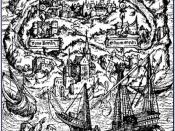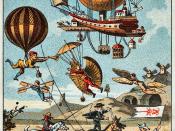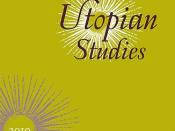Thomas More's Utopia and Renaissance Society
In Utopia, the author, Thomas More, uses the main character Hythloday to express his criticism of 16th century European society and suggests a revolutionary social system of equality, freedom, and happiness. More's radical ideas of social, political, and even clerical reform were vastly different from the beliefs held by European Hierarchy at the beginning of the Renaissance. With the height of feudalism, the rise of capitalism, and the start of the enclosure movement in Europe, Utopia is introduced as a possible answer to the growing problems in Europe in the mid-late 1500's. In his satirical cry for reform, More, through the eyes of Hythloday, explains the ideal social, educational, political, occupational, and religious system that exists in the land of Utopia.
To start, Hythloday (More) explains that his views and the ideals of Utopia can never exist without common land. At this time, in most of Europe, feudalism was in full effect.
This creates a situation where even poor farmers were able to have land as long as they were able to pay their land-owner with the crops they harvest from the land. On the contrary, as the enclosure movement began to sweep through Europe, more and more land was beginning to be closed off to people and left for grazing ground for cattle. Therefore, Europe was actually moving in the opposite direction of what Hythloday states is the basis for his whole theory. In Utopia, people do not attempt to expand their frontiers and even give their surplus from the harvest to neighbors. This greatly contradicts the idea of capitalism, which was growing so rampantly in 16th century Europe, where people could no longer pay with crops or harvest, but had to use currency. Hythloday goes on to say:
"Everywhere else people...


